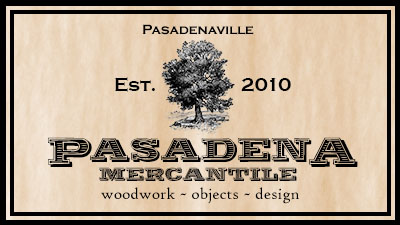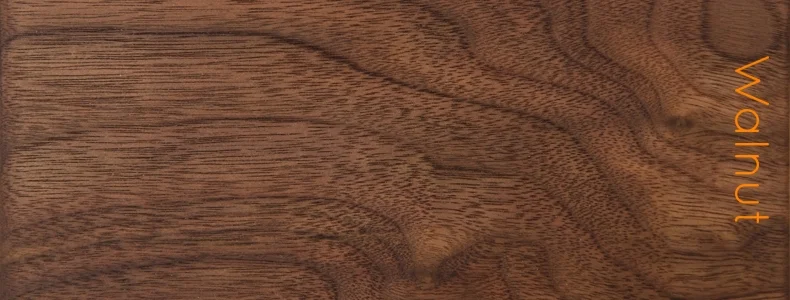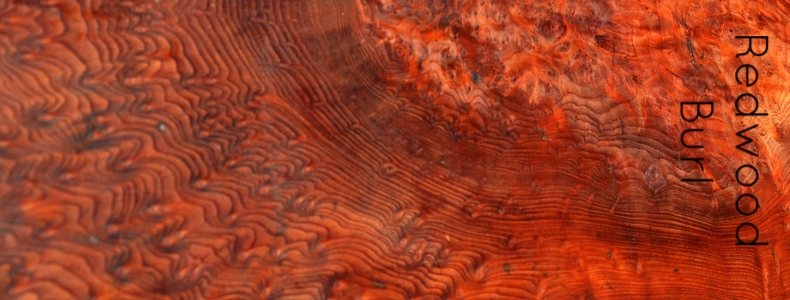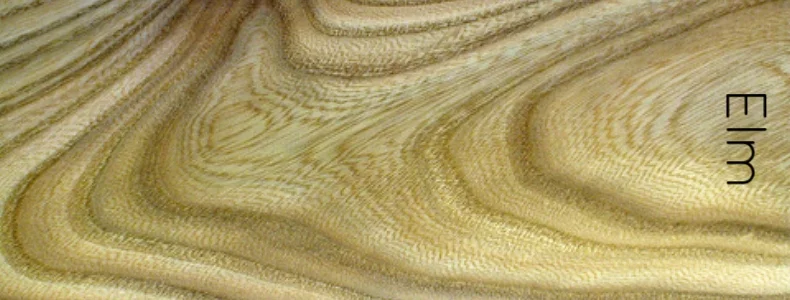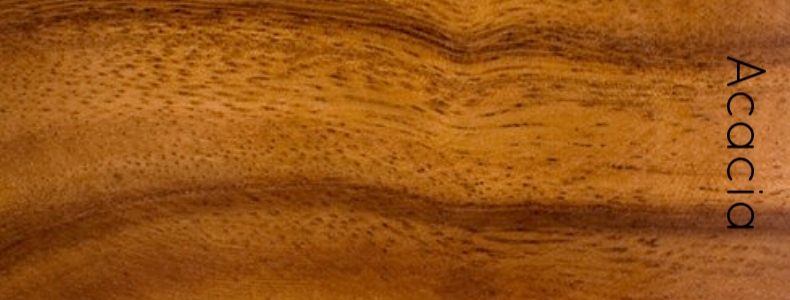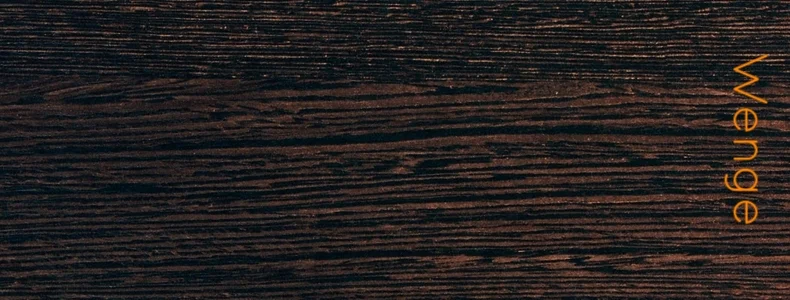WOODS
The following is a sampling of some of the wood species that we work with most commonly including a few that we don't work on often but are some of our favorites. Every wood has unique characteristics and properties, and while this is by no means an encyclopedia on wood we hope it might inform and assist you in choosing the right one for your next custom furnishing. Please note that the pictures are for reference purposes as there are many sub-species variations and all woods will vary in tone, color, grain and figuring from one another in addition to how different finishing methods are used.
Prized for its rich character and warm, varied tones and figuring, American Black Walnut has been the hallmark hardwood at Pasadenaville and is, by far, the most requested choice of wood. Its medium to dark brown color and sapwood contrast makes it a versatile wood that complements any decor style. We also work on Claro and English Walnut varieties, although they are often higher in price due to rarity and amazing character. We also specialize in Walnut Burl which are usually of the Claro Walnut variety.
Of the lighter color woods, Maple is the most popular and with many variations in terms of color and character available there's always going to be one that you will fall in love with. Generally, hard and soft Maple will take on a very light tone even after finishing is applied. Spalted Maple has gorgeous ink-black lines that give contrast to the wood, but can be difficult to work on since it's a generally weaker wood that sometimes has to be hardened or heavily varnished. Ambrosia Maple is characterized by beautiful patterns of gray-blue-brown streaks.
Redwood Burl first gained popularity when it was incorporated in mid century modern decor during the 1950's and 60's. Redwood Burl is not a dense wood and in some cases it needs to be either hardened or varnished with multiple coats in order to protect the wood. We usually fashion cleats out of harder woods for the underside if using stockier and heavier legs. This wood can darken significantly with most finishing processes but if done correctly the end result can be spectacular. Redwood Burls with lace figuring are the most desirable but can come at a cost.
Elm is a beautiful, light-colored wood that is durable and often has some amazing figuring. When finished it can take on some lovely golden brown colors that's contrasted against some creamy sapwood. It is a favorite among furniture makers, but over the years Dutch elm disease has devastated a significant number of these trees in North America and Europe. Elm Burls are very rare and as a result pricey, but the figuring and grain patterns can be spectacular. We don't work on many Elms but when we do we are never disappointed with how beautiful the wood is.
Known for its hardness and versatility, White Oak is a favorite among woodworkers and, along with Teak, is a preferred wood for outdoor furnishings. It's dense and thus quite heavy compared to other common hardwoods, but its tight grains and pores make it ideal for extreme exposures to the elements. White Oak that is quartersawn produces some very beautiful flecks along the grain and was the type of cut popular with Mission-style and Arts & Crafts Movement furniture. Red Oak has a slightly darker and more brown consistency.
Of the many species of Acacias (there are hundreds), we usually work with the Southeast Asian and Central/South American varieties. Considered an exotic it is characterized by a variety of brown and sometimes golden honey heartwood tones (usually not as dark as Walnut) and the sapwood can be very light and creamy. Some beautiful grain patterns can be found on some highly-figured Acacias. If an oil-based finish is used it might take on a deeper reddish-orange color. One species we will not work on is Koa which is endangered and in many cases illegally harvested.
Ash is a very hard wood that is generally light in color although the heartwood can have some contrasting brown variations. For those who prefer a blonder or 'whiter' wood and something that's lighter than Oak it's hard to beat Ash. It's a very versatile wood, used in everything from fine furniture (it's an excellent steam bending wood) to utilitarian objects such as boating oars and baseball bats. Unfortunately, Ash trees have been under attack by the Emerald Ash borer, so steps have been undertaken by several states to prevent its spread.
Cherry has always been a favorite compromise between the darker tones of Walnut and the lighter colors of Maple. It is a versatile wood and has been a staple for fine furniture since the first American settlers. Cherry is prized by woodworkers, especially cabinetmakers, for its beauty and smooth textures as well as its workability and durability. The final look and color can often depend on the type of finish being used and over time the color can patina, giving it a rich tone and a certain timelessness.
Wenge is one of our favorites--the very dark chocolate colors and tight grain patterns exude a very rich look (it is considered an exotic, grown mostly in central Africa). It's one of the hardest species of wood and has been popular with high-end flooring. For woodworking it can be difficult as it splinters like crazy (our fingers are battleworn from working on the wood) and unfortunately it can be very expensive. On rare occasions will we make furnishings completely out of Wenge, opting to use it mostly as a detail wood.
A quick note about exotic woods…
In the past we have procured non-domestic woods such as Monkeypod, Guanacaste and Suar, but very rarely—and there are reasons why. These species are more or less related to each other and are indigenous to tropical and sub-tropical areas of the world, with Indonesia and Cost Rica among other countries as primary sources of these woods. The trees from which these woods come from are fast growing and its sustainability is not questioned as they are quite abundant and
The problems we have seen include completely inadequate and, in many cases, wrong drying processes and techniques.
On occasion we receive calls and email to do repair work, and the
